Co-living spaces for travelers and locals — why does it feel so cool?
We were invited to speak about the concept of co-living in hospitality at the Smart Design and Wellbeing conference in Barcelona organized by Villeroy & Boch and supported by Dezeen.
Co-living offers much of the hotel guest experience. Guests do not only interact with local culture, they receive a space for self-discovery and exploration. For hoteliers it means increased revenue and more guests during off-season. For locals – more spaces in the neighborhood where they can work, meet friends, have lunch, learn and create.
How do we make the co-living spaces really work?
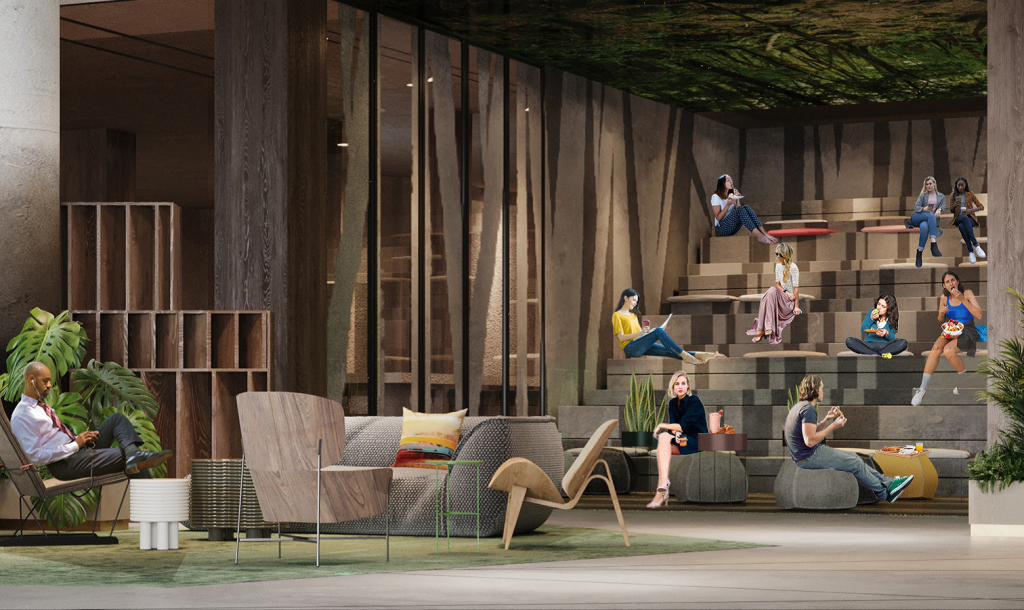
Image: design concept for a multi-functional hotel lobby
Make it Multi-functional and Fluid
In our previous post we were telling why we need fluid spaces. In the locations of the future, the functional boundaries are blurred, and the interests of each guest define the space. At the same time, as Dezeen’s editor-in-chief Marcus Fairs well noticed during our talk at the conference, that if we provide too many options for guests it might be disorienting for them. The key is to make the design intuitive.
This layout is demonstrating guests and locals flows. Every person intuitively chooses the perfect place to work a bit, to have lunch or to chat with friends due to the multi-layers space.
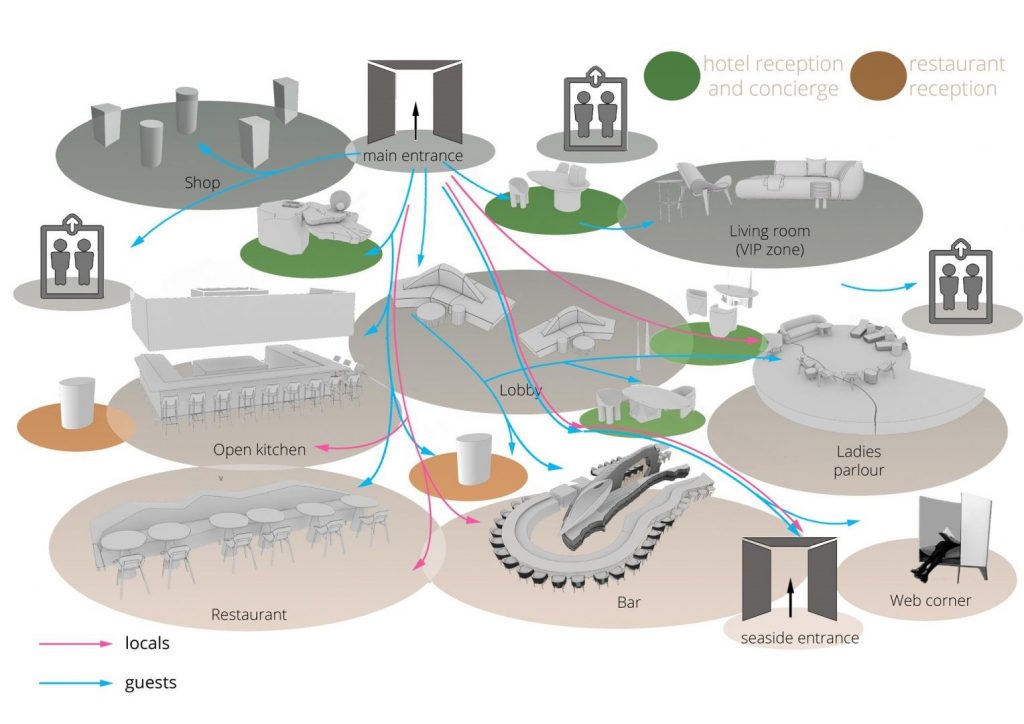
Image: layout for a multi-functional hotel lobby
All zones are multifunctional: we do not limit guests in any way of using space. A lecture hall can be a recreation area and a place for lectures and workshops.
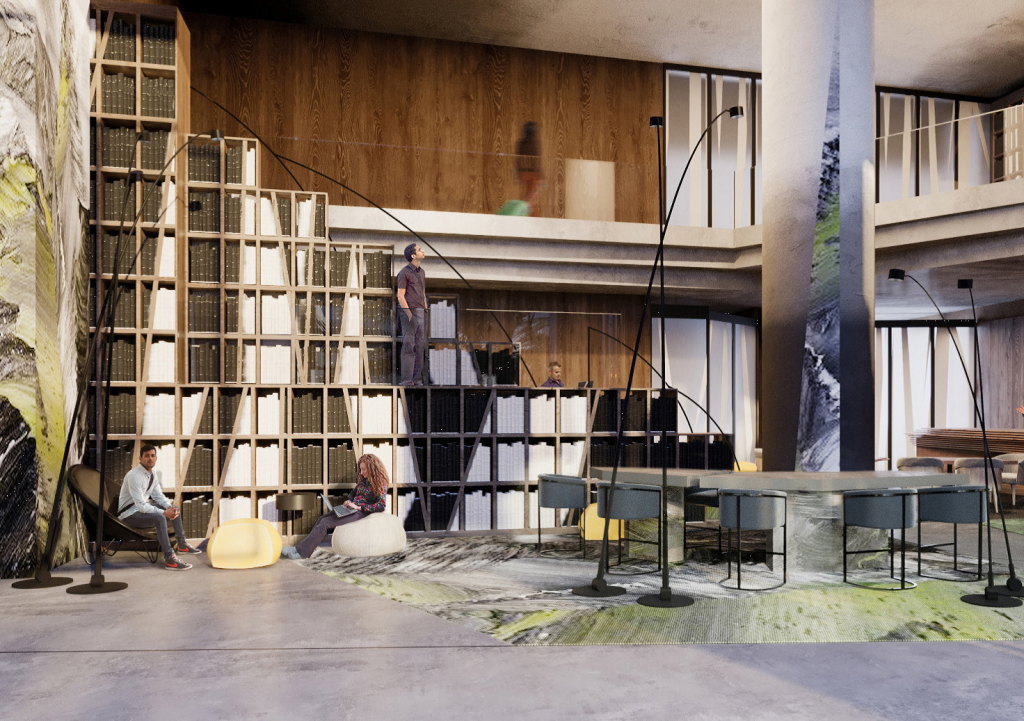
Image: design concept for a multi-functional hotel lobby
Allow Some Private Space
At the same time, we organize quiet enclaves in public spaces, where people can work in a tranquil atmosphere or just relax and read. By separating such areas with smart glass or sound absorbing partitions, we reserve some private space for guests.
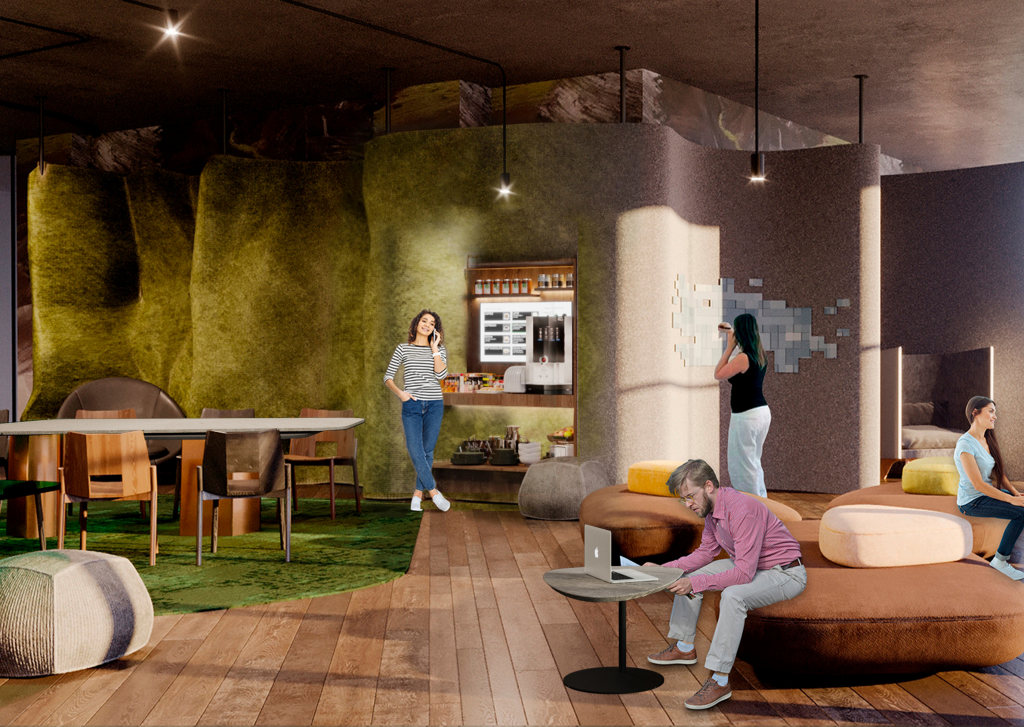
Image: design concept for co-working space in a hotel lobby
Go Back to Local Roots
Make the space natural for its owners – natives. And your guests will love it. New generation of guests are explorers, and in general, we are all fed up with artificial things, we want authentic experiences. Vibrant, lively spaces with local features and experiences work better.
In our Mercure Kaliningrad project, we recalled the cultural and literature heritage of the city and reproduced the magical tale of The Nutcracker and the Mouse King, written by Ernst Theodor Amadeus Hoffman. The author was born and worked in Königsberg, which was renamed into Kaliningrad later.
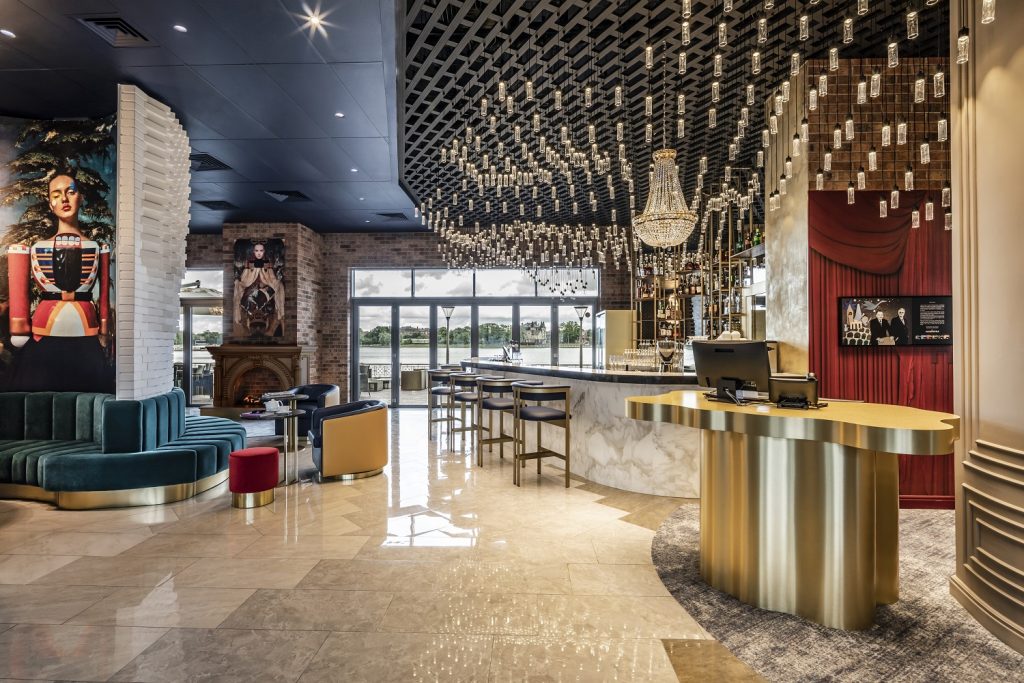
Image: Mercure Kaliningrad hotel lobby
Offer New Experiences
We are living in the era of experience economy. The guests don`t only want to be observers, but to be involved in the process and to share their experience in social media and tell everybody stories about themselves.
A bold mix of experiences worked perfectly for sophisticated audience of Community, a multi-functional space in Moscow’s center right next to the University for Design and Technology. Theatre, art, workshops, restaurants with two signature cuisines, tea-room and bar – all the spaces are designed around library space.
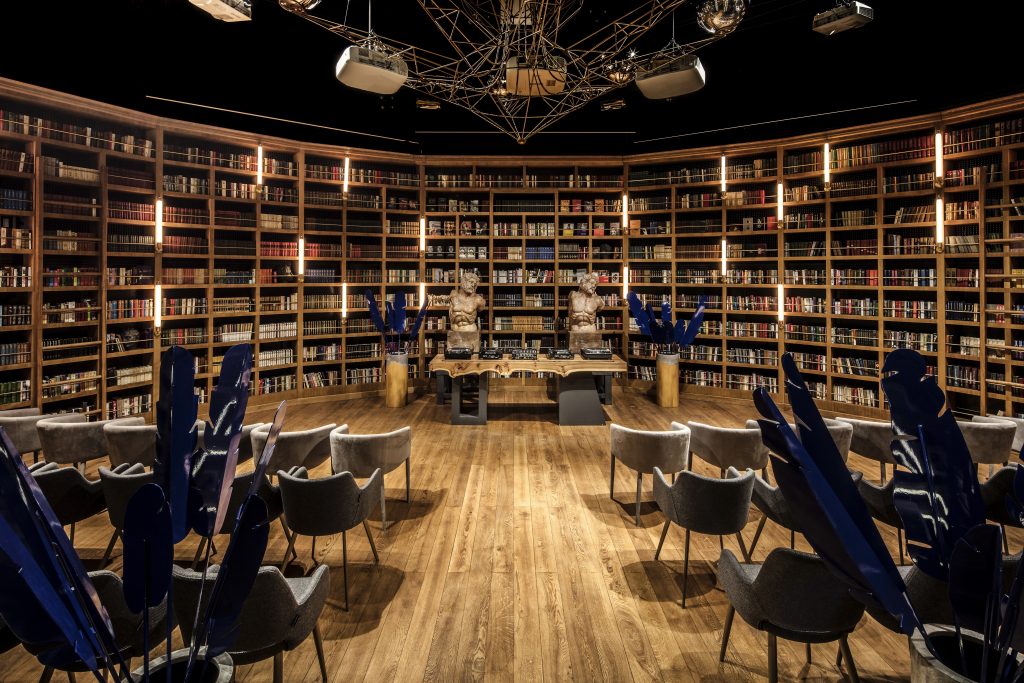
Image: Multi-functional space Community Moscow
In the end design should be relevant, even if it is an illuminated sheep 🙂

Image: Hotel Ibis Styles Tbilisi